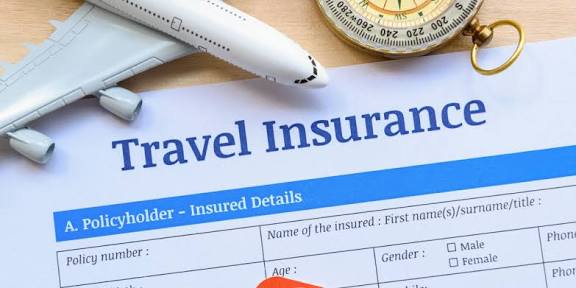Introduction
Travel brings excitement and adventure, but it also comes with its share of risks. Unforeseen events like cancelled flights, lost baggage, or an unexpected medical issue abroad can quickly turn a dream vacation into a stressful situation. Travel insurance provides a safety net in these moments, offering financial protection when things go wrong. However, knowing how to effectively file a claim can determine how quickly and efficiently you’re reimbursed. In this guide, we’ll break down the entire claims process to ensure you’re prepared if an incident occurs.
Know Your Travel Insurance Policy
Before you even think about submitting a claim, it’s crucial to understand the terms of your travel insurance policy. Not all policies offer the same coverage, and each one has different exclusions, limits, and requirements. By reviewing your insurance documents, you’ll know what types of incidents are covered, such as medical emergencies, trip cancellations, or lost baggage, as well as any deductibles or claim limits. Being familiar with the policy terms upfront can help you avoid surprises later on and ensure that your claim meets the insurer’s criteria.
Take Swift Action When Problems Arise
Timeliness is one of the most important factors in a successful insurance claim. Whether you’re dealing with delayed luggage, a missed flight, or a sudden illness, reaching out to your insurance provider as soon as the issue arises can make all the difference. Most insurers provide emergency assistance services available 24/7. Informing them early will set the claims process in motion and help you follow the correct procedures, increasing the likelihood of your claim being approved.
Collect All Essential Documentation
The strength of your claim lies in the documentation you provide. The more detailed and organized your paperwork, the easier it will be for your insurance company to process the claim. For medical claims, keep all medical records, receipts, doctor’s reports, and any relevant documentation. If your trip was canceled, you may need to provide a cancellation notice from your airline or hotel. For lost items or theft, police reports will be necessary. Be sure to also keep boarding passes, travel receipts, and itineraries, and make digital copies in case they get lost.
Reach Out to Your Insurer
After gathering the necessary documentation, contact your travel insurance provider. Most companies offer several channels for submitting claims, including online portals, mobile apps, email, or regular mail. If you’re unsure about the process, don’t hesitate to call customer service for guidance. A claims adjuster may be assigned to assist you through the entire procedure, so be ready to answer specific questions about the incident, such as when, where, and how it happened.
Complete the Claim Form Thoroughly
Filling out the claim form correctly is a critical part of the process. Double-check all the information to avoid errors that could cause delays or lead to a denial. The form will typically ask for your personal details, policy number, trip information, and a description of the incident. Attach all necessary documentation and review everything carefully before submitting. If you’re submitting online, ensure that your scanned documents are clear and legible to avoid processing delays.
Submit Your Claim Without Delay
Most travel insurance policies come with a deadline for filing claims, often between 30 and 90 days from the incident. Missing this deadline can result in your claim being rejected. To prevent any complications, file your claim as soon as possible, ideally while the details are still fresh in your memory. Once submitted, confirm that your insurer has received the claim and keep track of your reference number for future follow-ups.
Keep Open Communication with the Claims Team
After submitting your claim, stay in regular contact with your insurer. If they request additional information or documentation, provide it as quickly as possible to avoid delays. Responding promptly to their requests will help keep your claim moving through the review process. Document all communication with your insurance provider, noting who you spoke to, when, and what was discussed. This will help you stay organized if any issues arise later.
Be Patient, but Follow Up Regularly
Insurance claims can sometimes take longer than expected to process, particularly if the claim is complex. While it’s essential to be patient, don’t hesitate to follow up if you haven’t received an update within a reasonable time frame. Most insurers provide tracking tools through their websites or apps, which can help you monitor the status of your claim. A polite follow-up every 10–14 days is a reasonable way to stay informed about your claim’s progress.
Understand Potential Claim Outcomes
Once your claim has been reviewed, you’ll receive a decision. There are three possible outcomes: approval, partial approval, or denial. If your claim is approved, you’ll be informed of the reimbursement amount and how it will be paid. If partially approved, review the reasons provided and check the specifics of your coverage to understand what was excluded. In case of a denial, don’t panic—review the explanation carefully. Insurers are required to explain the rationale behind the denial, often citing specific policy clauses.
How to Appeal a Denied Claim
If your claim is denied and you believe the decision is incorrect, you can appeal. Gather any new evidence that might support your case and submit it to the insurer, along with a formal appeal letter. The letter should outline why you think the claim was wrongfully denied, and be clear and concise. Most insurance providers have an internal review process, and if that doesn’t yield the desired outcome, you can escalate the issue to an ombudsman or regulatory body.
Strategies for an Effortless Claims Experience
To make the claims process smoother, here are some helpful tips:
- Keep a copy of your travel insurance policy with you during your trip.
- Retain receipts and proof of payment for all travel-related expenses.
- Report incidents to relevant authorities (e.g., police or airline) immediately.
- Take photos of any damage or loss to property, luggage, or items.
- Use a credit card for purchases, as it may offer additional protection or proof.
Common Errors to Avoid
Avoiding common mistakes can improve the likelihood of your claim being processed successfully. Here are some pitfalls to watch out for:
- Submitting your claim after the deadline.
- Inaccurate or incomplete forms.
- Insufficient documentation.
- Failing to understand the exclusions in your policy.
- Not contacting the insurer promptly after an incident.
By staying organized and careful, you can avoid these mistakes and give yourself the best chance of a positive outcome.
Honesty is Key in Claims
Always be honest when filing a claim. Providing false or exaggerated information can lead to your claim being denied, and may even result in legal consequences. Insurers have fraud detection systems in place, and dishonesty can jeopardize your future insurance coverage. Transparency helps ensure the claims process goes smoothly and strengthens your relationship with the provider.
Leverage Technology for a Smoother Process
Many travel insurance companies now offer apps and online platforms that allow you to submit claims, upload documents, and track the status of your claim in real time. Before your trip, familiarize yourself with your insurer’s digital services, and consider uploading copies of your important documents to cloud storage. This makes accessing information during a claim process much easier and faster.
When to Seek Legal Advice
If all avenues of appeal have been exhausted and you still believe your claim was wrongfully denied, it might be time to consider legal advice. Travel insurance is a contractual agreement, and if your insurer has not honored their obligations, you may have grounds for legal action. Legal counsel can help you understand your options, but this should be considered a last resort after exploring all other avenues.
What Happens After Your Claim is Approved
After your claim is approved, the insurer will typically process your reimbursement within two to three weeks. The payment will usually be made via bank transfer or check. Ensure that the payment details you provided are correct to avoid delays. Once the reimbursement is received, store all related documents safely, as they may be useful for tax purposes or future insurance claims.
Tips for Future Claims
Regardless of the outcome of your claim, each experience provides valuable insights that can help you better prepare for future incidents. Keep track of the documents you may need in case of an emergency, and consider reviewing your insurance policy to ensure it meets your needs. The more prepared you are, the easier it will be to handle any future claims smoothly.
Conclusion
Navigating the travel insurance claim process can seem overwhelming, but with the right preparation and understanding, it doesn’t have to be. By reviewing your policy, acting quickly, gathering all necessary documents, and maintaining clear communication with your insurer, you can increase your chances of a successful claim. Though the process may require patience, the peace of mind that comes with knowing you’re covered will make the effort worthwhile. Follow these steps, and you’ll be ready to handle any unexpected travel incidents with confidence.

